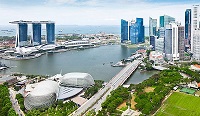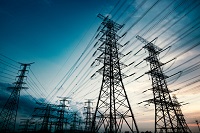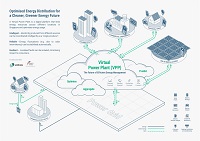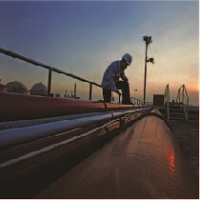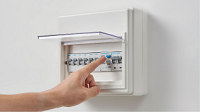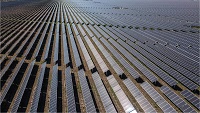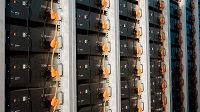Electricity powers our daily lives. We get light by flicking a switch and other conveniences with everyday appliances. Yet, not many are aware of what goes on behind the scenes when it comes to generating electricity in Singapore.
“Singapore has one of the most reliable electricity systems in the world. This is made possible because we deploy different power generation technologies that complement each other,” said Dr Darwin Chia, Director of the Electricity System Department at the Energy Market Authority.
Singapore uses natural gas to generate around 95% of our electricity supply. Combined Cycle Gas Turbines (CCGTs) are used in power plants as they are the most efficient thermal generation units available to meet our demand for electricity.
Natural gas and air combust in a gas-fired power plant, causing its turbine to rotate and generate electricity. Steam is created as a by-product to rotate a second turbine to generate more electricity in CCGTs.
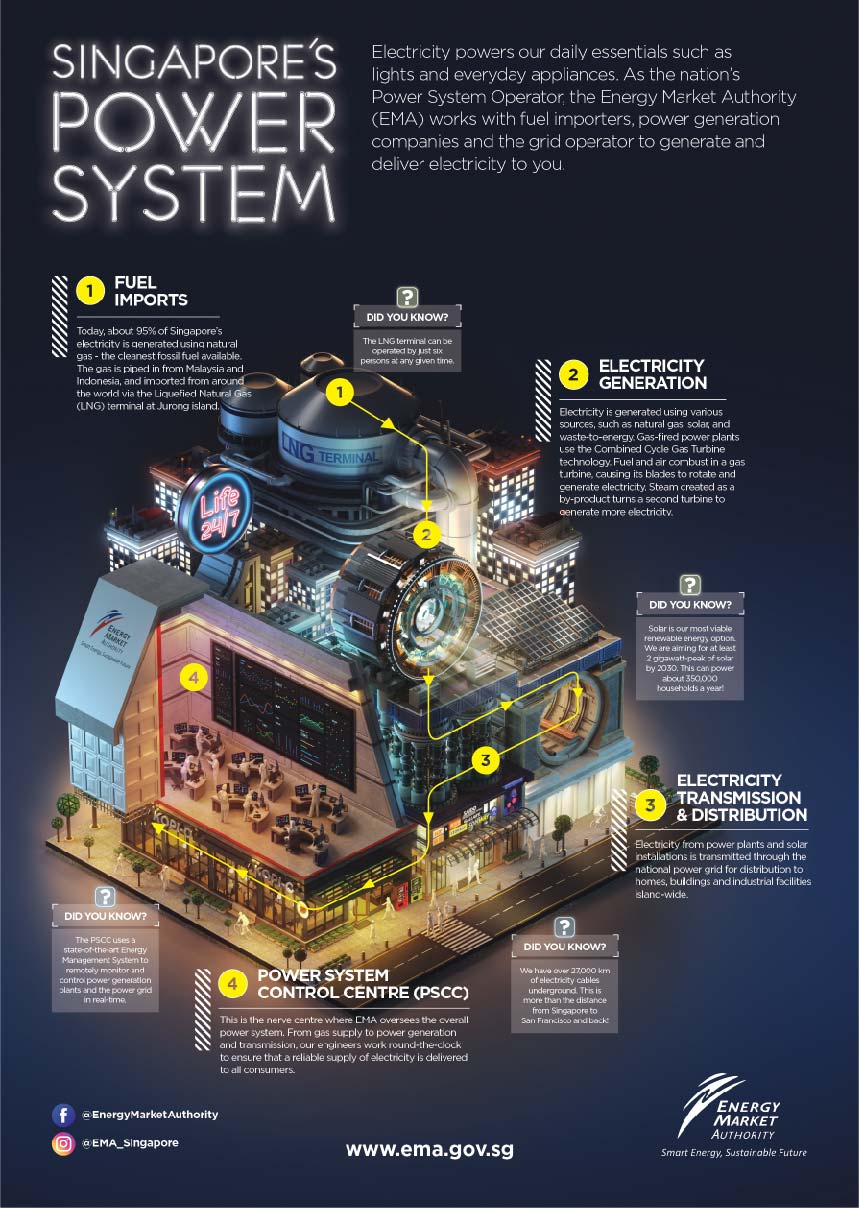
EMA works with fuel importers, power generation companies and the grid operator to generate and deliver electricity to all consumers in Singapore.
The Need for Speed
However, there is one downside of CCGTs - they could take up to 14 hours to reach full generation output from a cold state. This means that they are not able to start up quickly to respond to changes in energy demand.
This is why many power systems today include fast-start generating units. These units ensure responsiveness to provide sufficient electricity supply to meet demand. An example of such fast-start generation unit is the Open Cycle Gas Turbine (OCGT), which can start up within 10 minutes and reach full generation load within another 15 minutes.
However, existing OCGTs in our power system are reaching the end of their asset life and will be due for retirement. As they are typically less efficient than CCGTs, there has been no commercial interest from the private sector to invest in the much-needed replacement of these critical power infrastructure.
Stepping In to Ensure System Reliability
As a last resort, the government will be building new OCGTs to keep our energy supply resilient and reliable.
Through EMA’s subsidiary, Meranti Power Pte Ltd, two OCGTs will be built and are targeted to be operationally ready by 2025. As our electricity market is fully liberalised, the private sector will still have a role to play in ensuring sufficient power generation capacity.
“The two new OCGTs will play a vital role in keeping our electricity supply reliable with their fast-start capability. This will make a key difference in allowing us to restore electricity generation when needed to restore electricity supply quickly should there be any disruptions,” said Darwin.
Opportunities for Low-Carbon Power Generation
With Singapore’s net-zero emissions commitment by 2050, the new OCGTs will be future-ready to run on cleaner energy.
They can take up to 30% hydrogen as a low-carbon alternative fuel, and with the necessary enhancements, take up to 100% hydrogen in the future. This supports the use of hydrogen as a key potential decarbonisation pathway for Singapore, where hydrogen could supply up to half of our power needs by 2050.
As EMA enhances the power system to maintain its world-class system reliability, our efforts will work in tandem with Singapore’s energy transition towards a more sustainable future.
